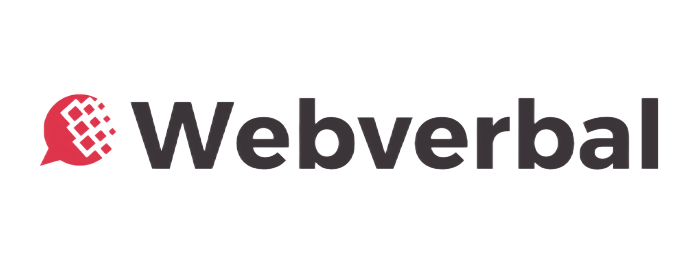Table Of Content
- Introduction
- 1. The Clarity Formula
- The story
- 2. The Burnout Equation
- The story
- 3. The Trust Loop
- The story
- 4. The Focus Rule
- The story
- 5. The Growth Paradox
- The story
- 6. The Authenticity Filter
- The story
- 7. The Founder Energy Equation
- The story
- 8. The Decision Formula
- The story
- 9. The Leadership Law
- The story
- 10. The Creativity Constant
- The story
- 11. The Confidence Curve
- The story
- 12. The Network Multiplier
- The story
- 13. The Consistency Loop
- The story
- 14. The Learning Equation
- The story
- 15. The Product-Market Fit Formula
- The story
- 16. The Storytelling Principle
- The story
- 17. The Productivity Paradox
- The story
- 18. The Hiring Truth
- The story
- 19. The Founder Resilience Ratio
- The story
- 20. The Startup Reality Check
- The story
- 21. The Emotional ROI
- The story
- 22. The Customer Love Formula
- The story
- 23. The Founder Longevity Equation
- The story
- 24. The Communication Equation
- The story
- 25. The Investor Alignment Rule
- The story
- 26. The Opportunity Filter
- The story
- 27. The Inner Freedom Formula
- The story
- Closing Reflection
- FAQs
Introduction:
Why Founders Need Better Mental Math
Every founder wrestles with complexity. We overanalyze, overthink, and overplan — when often, clarity lies in elegant simplicity. That’s what these founder formulas are about: short, actionable equations that decode long-standing startup problems and turn confusion into clarity.
We overanalyze everything — clarity, growth, burnout, funding, product-market fit — yet the solutions often lie in elegant simplicity.
That’s what The Founder’s Formula is about.
It’s a mental framework — a collection of short, evergreen “equations” that translate complex founder dilemmas into simple, actionable insights.
Think of it as the calculus of entrepreneurship — not about numbers, but about patterns.
Each formula below is built on three ingredients:
- The known pain — what founders universally struggle with.
- The unexpected logic — a counterintuitive insight.
- The simple math — an equation that reframes the issue.
And for each, you’ll see a real-world startup story that proves it works.
Build your first 1,000 true fans with this step-by-step startup community blueprint—turn curiosity into connection, and connection into traction.
1. The Clarity Formula
Clarity = (What drains you ✖ What excites you) ÷ What repeats itself
The story:
When Ben Silbermann, founder of Pinterest, quit Google, he wasn’t sure what to build next. He noticed one pattern — he loved collecting things, even digitally. That insight — the intersection of excitement and repetition — birthed Pinterest.
The takeaway:
Your next direction hides where your exhaustion meets your enthusiasm.
Clarity isn’t found in new plans — it’s revealed in recurring patterns.
Decode clarity for founders—learn how to think strategically, act decisively, and stay mentally grounded while building your startup.
2. The Burnout Equation
Burnout = Meaning – Margin
The story:
Whitney Wolfe Herd, founder of Bumble, said she felt “emotionally bankrupt” after Tinder’s launch days. Meaningful work drained her because it lacked margin — space for reflection and rest. When she built Bumble, she created not just a company but boundaries.
The takeaway:
Purpose without pause leads to depletion.
Margin is not laziness; it’s maintenance for your mission.
3. The Trust Loop
Trust = Repetition + Reflection
The story:
When Zoho decided to stay bootstrapped for decades, it didn’t win trust through marketing — it earned it through consistency (repetition) and honest course correction (reflection).
The takeaway:
People trust visible progress, not hidden perfection.
Repeat. Reflect. Refine.
4. The Focus Rule
Focus = (Goals × Values) – Noise
The story:
During Airbnb’s early years, Brian Chesky rejected dozens of ideas — from travel packages to community apps — because they didn’t align with belonging, Airbnb’s core value.
That clarity of focus turned chaos into coherence.
The takeaway:
When your goals multiply your values, you build resonance, not just revenue.
5. The Growth Paradox
Growth = Depth × Duration
The story:
Mailchimp’s founders took 18 years to reach a billion-dollar exit — without VC funding. They built depth before scale.
Their compounding advantage wasn’t speed; it was staying power.
The takeaway:
Speed adds visibility. Depth adds longevity.
The longer you stay consistent, the more you look like an “overnight success.”
6. The Authenticity Filter
Authenticity = Story – Strategy (when story > strategy)
The story:
When Canva’s Mel Perkins spoke about rejections from investors, it wasn’t PR; it was reality. The story itself became the brand.
The takeaway:
If your story starts serving your strategy, authenticity dies.
Let your truth lead; strategy will follow.
7. The Founder Energy Equation
Momentum = Movement – Mental Friction
The story:
Nikhil Taneja of Yuvaa says his creative energy flows when “I stop overthinking and start shipping.”
Momentum isn’t about more caffeine — it’s about removing resistance.
The takeaway:
You don’t need more motivation. You need fewer blockers between thought and action.
8. The Decision Formula
Decision Quality = (Clarity × Courage) ÷ Fear
The story:
When Reed Hastings realized DVD rentals would die, he bet on streaming — a move most investors opposed.
Courage multiplied clarity. Netflix became inevitable.
The takeaway:
Good decisions are not fearless — they’re fear-managed.
9. The Leadership Law
Leadership = Vision × Vulnerability
The story:
During COVID-19, Zoom’s founder Eric Yuan openly shared security flaws instead of hiding them. That vulnerability amplified his credibility.
The takeaway:
Transparency scales faster than control.
10. The Creativity Constant
Creativity = Curiosity – Conformity
The story:
When Bhavish Aggarwal questioned why Indian commuters had to suffer chaotic cabs, Ola emerged from that curiosity — not conformity to Western models.
The takeaway:
Ask “why not?” one more time than others. Innovation begins there.
11. The Confidence Curve
Confidence = Evidence × Experience
The story:
Falguni Nayar, Nykaa’s founder, didn’t start as a beauty expert. She built confidence from early customer traction — evidence — and market learning — experience.
The takeaway:
Belief compounds through proof. Start small, scale conviction.
12. The Network Multiplier
Network Value = Generosity × Relevance
The story:
Naval Ravikant built AngelList by giving before asking — curating investor opportunities selflessly. His network grew through generosity, not transactions.
The takeaway:
Networks expand where value flows outward first.
13. The Consistency Loop
Progress = Consistency × Time
The story:
Kunal Shah’s philosophy posts may look casual, but he’s been writing insights daily for years. That consistency created credibility, then followers, then opportunities.
The takeaway:
Repetition is your most underrated growth hack.
14. The Learning Equation
Wisdom = Experience ÷ Ego
The story:
When Travis Kalanick ignored feedback, Uber stumbled. When Dara Khosrowshahi listened, Uber stabilized.
The difference? Ego.
The takeaway:
Experience teaches nothing if filtered through pride.
15. The Product-Market Fit Formula
PMF = Pain Solved × Love Repeated
The story:
CRED didn’t just reward bill payments — it made people feel rewarded. Repeat love signals PMF, not just product metrics.
The takeaway:
If users keep returning without a nudge, you’ve crossed the invisible threshold.
16. The Storytelling Principle
Impact = Emotion × Relevance
The story:
Tesla’s mission isn’t “electric cars.” It’s “accelerating the world toward sustainable energy.” Emotion meets relevance — that’s brand gravity.
The takeaway:
Data informs, but emotion converts.
17. The Productivity Paradox
Output = Focused Time × Energy Management
The story:
Basecamp’s founders capped work at 40 hours and banned after-hours emails.
Result? Higher creativity, less burnout.
The takeaway:
Productivity is about energy rhythm, not time stretch.
18. The Hiring Truth
Right Hire = Skill × Culture Fit × Curiosity
The story:
At Zappos, new hires get paid to quit if they don’t feel aligned with culture.
That’s how you protect curiosity and cohesion.
The takeaway:
Curiosity is the cultural antibody that prevents stagnation.
19. The Founder Resilience Ratio
Resilience = Vision ÷ Expectations
The story:
Byju Raveendran built for years before Byju’s became a household name. His calmness came from adjusting timelines, not toning down ambition.
The takeaway:
Resilience thrives when you detach timelines from your self-worth.
Harvard Business Review – “How Founders Build Resilience”: Explore evidence-based practices top entrepreneurs use to recover faster and thrive through adversity.
20. The Startup Reality Check
Success = (Execution × Timing) ÷ Ego
The story:
Oyo scaled aggressively but stumbled on timing and ego-driven expansion. Swiggy, meanwhile, scaled slower — but smarter.
The takeaway:
Timing trumps talent when humility leads execution.
21. The Emotional ROI
Peace = (Purpose × Progress) – Pressure
The story:
Deepinder Goyal keeps returning to his desk even after Zomato’s IPO. Why? Purpose still excites him more than pressure defines him.
The takeaway:
When your “why” is bigger than your “what,” peace compounds.
22. The Customer Love Formula
Loyalty = Expectation – Effort Gap (minimized)
The story:
Amazon’s obsession with “1-click checkout” is really about removing effort gaps. Convenience breeds loyalty more than discounts do.
The takeaway:
Every extra step is a lost sale.
23. The Founder Longevity Equation
Sustainability = Health × Purpose × Delegation
The story:
Richard Branson built an empire yet spends time kite-surfing. Because he learned the hard truth: burnout kills innovation.
The takeaway:
Delegate energy before you delegate execution.
24. The Communication Equation
Clarity = Simplicity ÷ Ambiguity
The story:
Slack’s onboarding message — “Be less busy” — did more for growth than any marketing campaign.
Simple language. Zero fluff.
The takeaway:
If you can’t explain it simply, you don’t understand it fully.
25. The Investor Alignment Rule
Investor Fit = (Vision × Values) ÷ Vanity
The story:
Zoho refused external funding for 25 years. Its investors were its customers.
That’s alignment over approval.
The takeaway:
The wrong money costs more than no money.
26. The Opportunity Filter
Right Opportunity = (Alignment × Timing) – Distraction
The story:
When Unacademy started, edtech wasn’t trendy. They still pursued alignment with mission — not hype. Later, timing caught up.
The takeaway:
Distraction looks like opportunity in early disguise.
27. The Inner Freedom Formula
Freedom = Boundaries × Awareness
The story:
Ratan Tata famously said, “Take the stones people throw at you and build a monument with them.”
That’s awareness in motion — discipline that creates dignity.
The takeaway:
Freedom isn’t doing everything. It’s knowing what not to do.
Closing Reflection:
The Founder’s Algebra of Life
Startups are not built from code and capital alone — they’re built from clarity, courage, and compounding insight.
Each formula here isn’t advice — it’s a mirror.
Find the equation behind your struggle, and you’ll find your next breakthrough.
FAQs
A Founder’s Formula is a concise mental model — an equation-style insight that reframes a persistent founder problem into a simple, actionable rule. These are designed to be memorable, repeatable, and immediately applicable.
Use them as diagnostic tools. When you face a problem (e.g., burnout, lack of focus), pick the relevant formula and map your reality to its variables. The formulas turn intuition into quick decisions and highlight where to act (reduce X, increase Y).
They are distilled patterns derived from real startup stories, founder experience, and practical coaching. Each formula is illustrated with examples from successful companies to demonstrate practical validity — they are heuristics, not scientific laws.
Yes. Credit “Debansh Das Sharma / Webverbal” for the codified list when used verbatim. For internal use, you may apply the formulas freely. For commercial redistribution, please request permission via Webverbal.
Start with Clarity, Burnout, and Product-Market Fit:
Clarity = (What drains you × What excites you) ÷ What repeats itself
Burnout = Meaning − Margin
PMF = Pain Solved × Love Repeated
These diagnose direction, capacity, and early traction.
Translate variables into simple KPIs. Example: for “Momentum = Movement − Mental Friction,” measure weekly shipped experiments (Movement) and average decision lead time (Mental Friction). Improvement in output or conversion over 4–8 weeks validates the change.
Absolutely. The models are domain-agnostic mental frameworks. Swap startup KPIs for relevant metrics (program reach, stakeholder satisfaction) and the formulas remain useful.
Yes — each formula is a ready micro-post. Pair the formula with a one-line personal example or a short case study to increase shareability and engagement.
Review every 6–12 months. Update formulas when you have new, repeatable evidence or new case studies that refine variable definitions. Preserve the original list as a historical reference.
Webverbal will publish companion worksheets and a Founder’s Formula Journal (downloadable). For immediate use, transform each formula into a one-page checklist: variable definitions, 3 actions to increase/decrease variables, and 2 KPIs to track.




